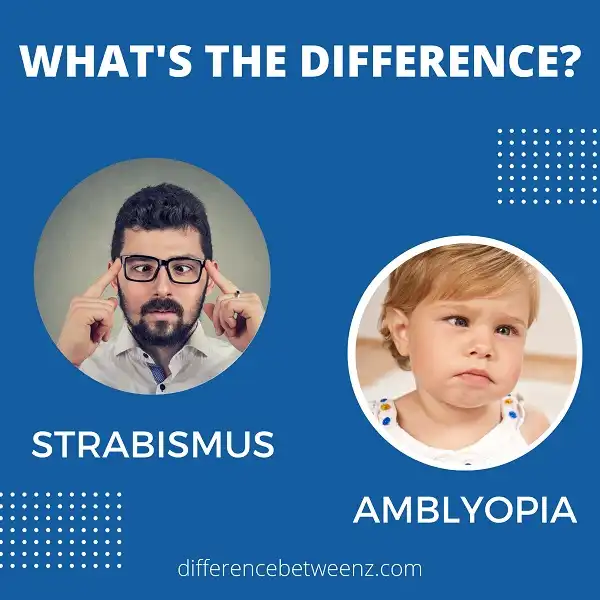One common eye condition that often occurs in children is strabismus. This is a condition where the eyes are not aligned properly and can cause vision problems. Amblyopia, also known as lazy eye, is another vision problem that can occur in children. Let’s take a closer look at the differences between these two conditions.
What is Strabismus?
Strabismus is a condition in which the eyes are not properly aligned with each other. The eyeballs may turn in (esotropia), out (exotropia), up (hyperopia), or down (hypoplasia). Strabismus can affect people of all ages, but it is most common in young children. If left untreated, strabismus can lead to amblyopia or a “lazy eye.” Strabismus is usually treated with glasses, contact lenses, or surgery. In some cases, vision therapy may also be used.
What is Amblyopia?
Amblyopia, also sometimes called “lazy eye,” is a condition in which vision in one eye is reduced because the eye and the brain are not working together properly. Amblyopia usually develops in early childhood, but it may not be diagnosed until later in life. It occurs when one eye is not used enough for the brain to develop normal vision in that eye.
Amblyopia may occur if the eyes are not aligned properly (strabismus), if one eye focuses better than the other (anisometropia), or if there is a problem with the optics of one eye. Treatment for amblyopia typically involves using an eye patch to cover the “good” eye and force the use of the “lazy” eye. Amblyopia can be mild, moderate, or severe. With treatment, most people with amblyopia regain useful vision in the affected eye. However, Amblyopia can lead to permanent vision loss if it is not detected early and treated appropriately.
Difference between Strabismus and Amblyopia
Strabismus and Amblyopia are two separate eye conditions that can both lead to vision problems. Strabismus is a condition where the eyes are not aligned properly, and Amblyopia is a condition where the vision in one eye is reduced. Both conditions can be treated with glasses, contact lenses, or surgery. In some cases, Strabismus can be caused by Amblyopia. If Strabismus is not treated, it can lead to permanent vision problems.
Conclusion
It is important to be able to distinguish between these two conditions because they require different treatments. If you are unsure of whether your child has strabismus or amblyopia, please consult with an eye doctor. Early diagnosis and treatment are key for both of these conditions.


